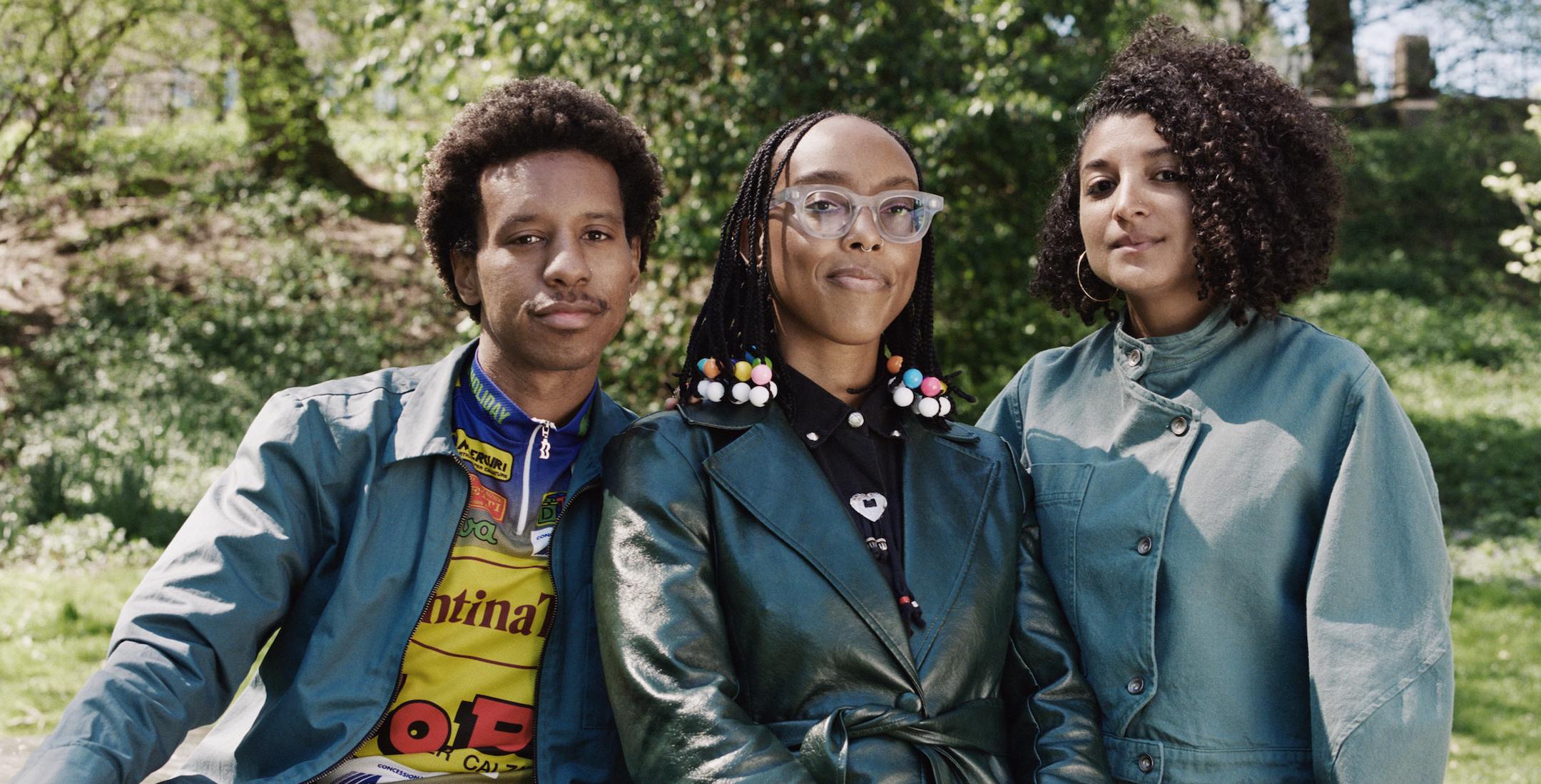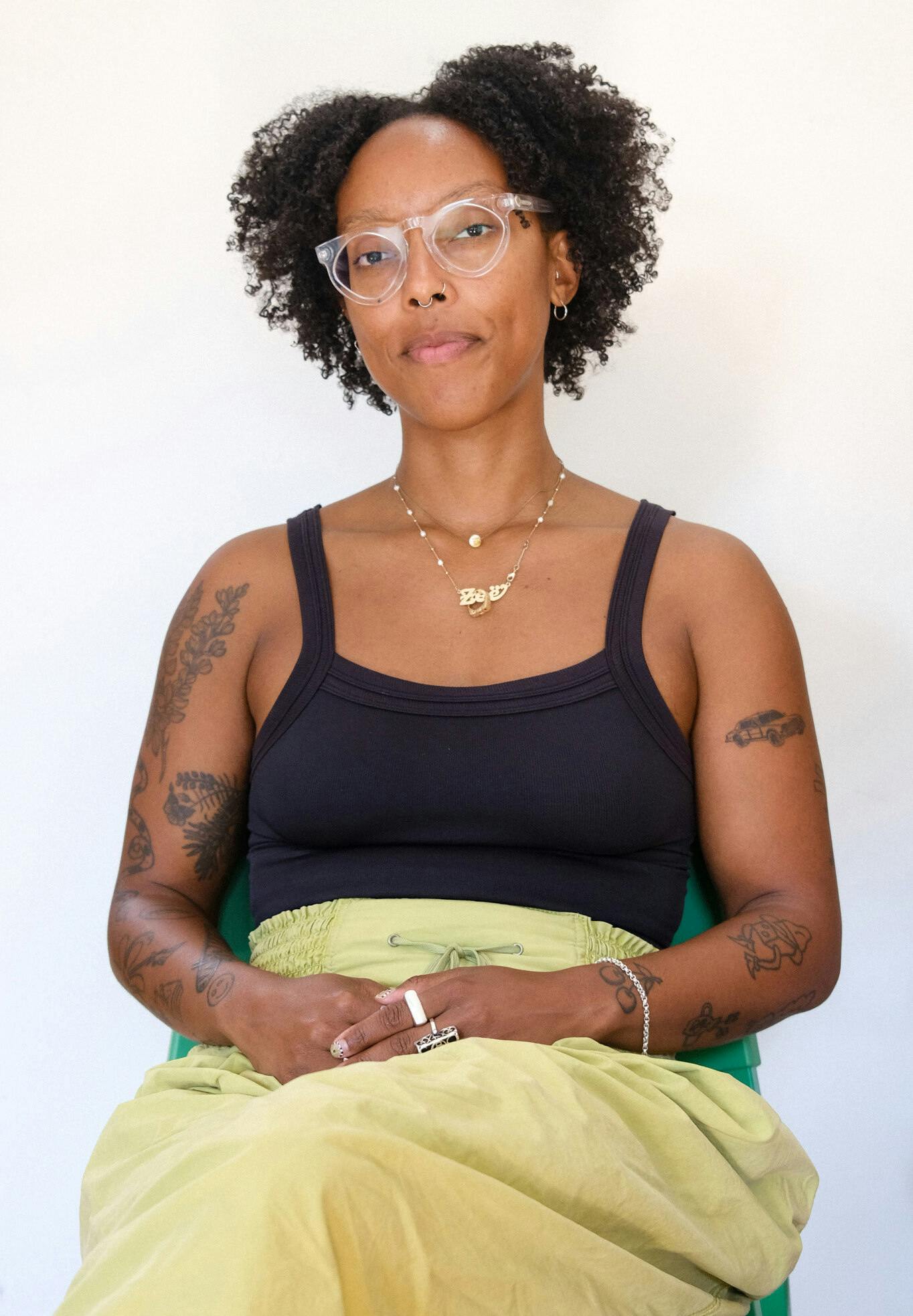What Are You Working On? The 2023–24 Artists in Residence Prepare for Open Studios

From left to right: Malcolm Peacock, Zoë Pulley, and sonia louise davis. Photo: Courtney Sofiah Yates

From left to right: Malcolm Peacock, Zoë Pulley, and sonia louise davis. Photo: Courtney Sofiah Yates
In February 2024, we spoke with the 2023–24 artists in residence, sonia louise davis, Malcolm Peacock, and Zoë Pulley, about what they have been up to during their time in the Museum's signature residency program.


2023–24 Studio Museum Artist in Residence. sonia louise davis. Photo: Ivan Forde
What are you working on, sonia louise davis?
For the last five years, I’ve been working with a tufting machine, which is an industrial rug-making tool, and I find it extremely fun. One does a cut pile, which leaves a shag texture. The other makes a loop pile, which gathers the yarn, sends it out, gathers it back. I never sketch ahead. My compositions are always improvised. The whole body of work is called “emergence.” Each piece gets a subtitle after I’ve completed and stretched it over stretcher bars as I’m thinking about the composition and ruminating on moments of lyricism. I tend to title them after music from the avant-garde free jazz world, which I feel very close to.
When I was an undergraduate, I sang with jazz ensembles all four years, but I always considered it alongside my academic work. I was a Black studies major and I was studying history, sociology, and literature, plus a little bit of art. Toward the end of school, I realized that being an artist could get at a lot of the ideas and the critical inquiry I had; that art could be the container for everything I wanted to explore. I stopped singing but that training is absolutely embodied and manifests itself across all the work I make.
I use all kinds of yarn. I love going to small family-owned yarn stores around New York City and feeling the very fine wool. A lot of stuff is hand-dyed, hand-spun, made with real care by artisans. I get a bunch more yarn in bulk from larger suppliers. Those tend to be acrylic and made with less care, you could say. In general, I’m using these ready-made materials and letting them sing. Working with yarn provides the touch factor that making soft work insists upon. I find a connection to singing in terms of the state of improvisation that you can get into, like a flow or a zone, where you're turning off the judgmental part of your brain, which is critical. On the other hand, you’re responding, acting, trusting that you have all the tools inside you to make something that you've never seen before.


2023–24 Studio Museum Artist in Residence. Malcolm Peacock. Photo: Elliott Jerome Brown Jr.
What are you working on, Malcolm Peacock?
I’m working around ideas of landscape, what would be considered the “great outdoors,” and how environments relate or don’t to Black people in the United States.
The last few summers I’ve spent in the Pacific Northwest, in Portland, Oregon, and taking trips to the coastline, running relay races that stretch from Mount Hood to Seaside. I’ve become immersed in environments where Black folks seldom appear. I’m particularly interested in the physical, mental, and emotional benefits of places with large open space that urban sites don't have as much access to. I’m from Baltimore, Maryland, and although it’s an urban, sometimes suburban, environment, I grew up going on these hikes and runs through wooded areas in Baltimore that I had access to through sports. Being with other teenagers for hours, unchaperoned, running for miles in the woods shaped how I think about everyday life in relationship to what is immediately around us. There are a lot of feelings and thoughts I have around autonomy in terms of being a Black person in public space, but as our world is becoming more surveilled and hyperpoliced, I’m interested in where we have a stake in how our lives go. Sites of nature are galvanizing forces that remind us we have a lot of intrinsic power.


2023–24 Studio Museum Artist in Residence. Zoë Pulley. Photo: Nik Muka
What are you working on, Zoë Pulley?
For the last few years, I’ve been interested in learning more about where I come from, recognizing that both sides of my family have roots in the American South, and thinking about how that has allowed me the privilege of the life I live. A lot of the work I’ve been creating has been investigating more about these people while they’re still here, and trying to figure out how I can frame their lives to give them their flowers while they're still around.
The primary thing is always family for me–extended family, families we form, and communities that come together by means of family. In my work and life, my grandmother, Sandra Olivia Moon Hightower, has been a recurring figure, a matriarch. Family is the makeup of all types of connections. Of course, there’s the blood, the lineage, the heritage, but my grandmother and I have, beyond all of that, this cosmic connection. Similarities are also passed down that aren’t through blood. Anytime I encounter other individuals and those same sparks happen, I’m like, “Wow, there’s some sort of family lineage here worth being curious about.”
I am currently working on a few different projects, all inspired by a poem by Gwendolyn Brooks, “Kitchenette Building.” I began trying to have a “conversation” with Brooks. I’m definitely thinking about the significance of home, the stuff within a home, and how items family members hold onto—picture frames, family photos, a pair of jeans that they wore once to a party—are a collection, are people building legacy.